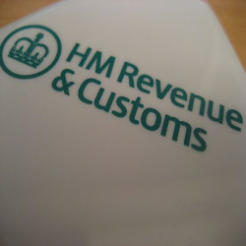The HMRC has stressed that under its new gift aid small donations scheme, a charity will get one £5,000 top-up allowance only, regardless of whether it is broken up into regional branches.
Members of HMRC met with representatives from the charity sector on Friday to discuss this and other “design issues” outlined in its Gift Aid Small Donations Scheme Consultation Document, published on 27 March.
The document aims to find “the balance between fairness and complexity” in the Chancellor of the Exchequer’s proposal to enable charities to claim a top-up payment equivalent to gift aid on up to £5,000 of small donations they collect each year. HMRC is welcoming feedback from the sector to iron out the details of the scheme.
One thing that the HMRC states in its consultation document, and reiterated at Friday’s meeting, is that it “wants to prevent organisations that are a single charity from fragmenting into smaller organisations in order to access more small gift aid (GASDS) payments”. This would also apply to those who have such a structure already in place for historic reasons, and presents a distinct “design challenge”. For example, the Roman Catholic church is one national charity, but each Church of England parish is its own charity.
“Some charities that carry out charitable activities in local communities operate through local groups that are registered charities in their own right,” the document states under the heading ‘policy design considerations’. “If the government simply allocated a £5,000 maximum limit for donations to each recognised charity, these groups would receive a greater number of allocations than other charities that may have a more centralised structure with local groups or branches that form part of the same charity.”
The document shows that HMRC is trying to find ways to ensure that some charities are not disadvantaged by their structure. Splitting the allowance or allocating a ‘lead charity’ were some of the possible ways to counter such fragmentation discussed at Friday's meeting.
Discussions at the meeting
Cathy Wilson, policy team leader for HMRC Charities and Nick Jones, policy adviser, chaired the Westminster meeting and fielded questions from representatives of a range of charities that have an interest in the scheme.
The agenda of the two-hour consultation session primarliy covered the abovementioned ‘connected charities’ issue and two other main points that the HMRC was seeking opinions on: matching (a proposal designed to prevent abuse of the scheme, wherein a charity must match – either exactly or to a set degree – their small donation claim to their gift aid claim) and community buildings, a proposal to add an extra £5,000 limit for charities for each community building it collects donations in, regardless of how many different individual groups fundraise within that building.
Answering questions from the floor, HMRC emphasised that the GASDS would require evidence, but specifics of this would be decided as consultation progressed. It was only for UK taxpayers, so the issue of students and foreign donators (such as tourists visiting a church and putting money in the collection plate) needs to be dealt with; inspections for GASDS will largely reflect those for gift aid; and the scheme is designed to be for physical, spontaneous donations only – ruling out text and online giving.
“This policy is about spontaneous giving – such as putting a few coins in a bucket or collection tray – where someone could have given a gift aid declaration, but administratively it was not convenient or practical either to the donor or that charity itself,” summarised Wilson.
Explanation of small gift aid
GASDS, intended to be introduced from 6 April 2013 with no fixed end date, is designed to help charities and community amateur sports clubs to claim a ‘gift aid-style’ payment on donations made in situations where donors either don’t or won’t give their details – such as bucket collections or a plate passed around during religious services – in the way required by the existing gift aid scheme. The scheme will only apply to small donations of £20 (raised at Budget 2012 from the previously-stated limit of £10).
Unlike gift aid, GASDS is not a tax relief and payments through it are not repayments of tax; instead it will be funded through public expenditure and legislated separately from HMRC’s current annual Finance Bill process. It is not, HMRC stressed, a replacement for gift aid, rather a concurrent scheme, designed to help smaller charities to get the same benefits as larger organisations. HMRC will, however, administer claims in the same way that it does for gift aid claims – so the full £5,000 figure would actually top up by another £1,250.
Since GASDS would have fewer records, it raises the issue of possible fraud and abuse. Therefore HMRC spoke of certain eligibility criteria that a charity would need to fulfil: it would need to have at least a three-year record of good compliance with gift aid and to keep this standard up during its participation in GASDS (this means that GASDS will not apply to ‘pop up’ charities that are born out of a specific event, until they are at least three years old and have proved their compliance). Claims on the scheme will be based on the tax year from 6 April, regardless of which quarter the particular charity files its accounts, and will need to be made within one year of the end of the tax year in which the small donations are collected.
The full consultation document, which includes a more in-depth explanation of the GASDS, is available on the HRMC’s website here.
The scheme is only at the proposal stage, and the government will consult on this draft guidance later this year, taking into account the reaction of the voluntary sector, before finalising it for the 2013/14 financial year. The closing date for comments is 25 May 2012.









